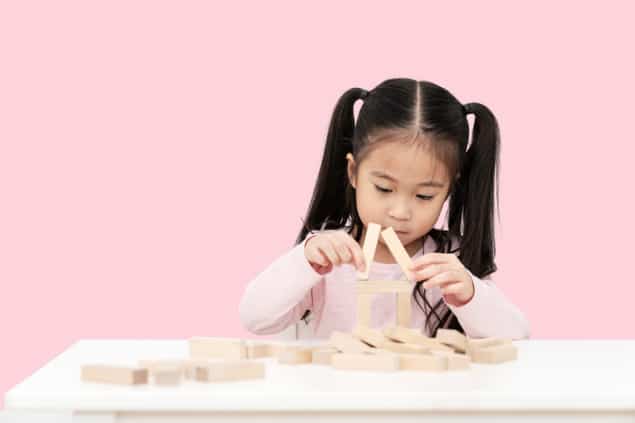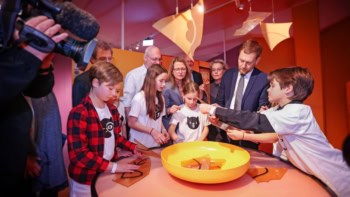Elizabeth Crilly, Alison Voice and Samantha Pugh says it is important to value and recognize other sources of technical knowledge rather than just scientific competence

Innovation is crucial to a knowledge-based economy. Indeed, its importance has become starker than ever in the wake of the COVID-19 pandemic, which has underlined our reliance on science and technology. One simple way to boost innovation is to increase the diversity of the workforce – broadening the spectrum of experience and perspective. Yet physics has lagged woefully behind in this regard, meaning it is failing to realize its potential by enabling students from all backgrounds to study and succeed in the subject.
Despite so few students from under-represented minorities opting to study physics in secondary school, universities have tried hard to widen participation in physics. This work has been well researched and documented, but after four decades of concerted effort, barely 20% of students doing A-level physics are girls. Students from ethnic minorities and low socioeconomic backgrounds are shunning physics too.
To increase the number of students in physics from all walks of life, it is crucial therefore that we make the subject more accessible and the learning journey more inclusive. To get a better understanding of what it is like for those from a minority group to study physics, in 2019 the Physics Education Research Group at the University of Leeds gathered the learning experiences of 657 physics-qualified respondents aged 18 to 75. All had studied A-level physics and 96% had continued to graduate level in a technical subject. They were representative of the UK population and of the current ethnic spread among university physics students, although they included an almost equal gender balance with 52% of respondents being female.
Almost a quarter of respondents reported that their study had been impacted by belonging to a minority group – whether classified according to gender, ethnicity, social class, academic background or attainment. From this group, 28% said that their minority status had been an overall positive experience, with most of them (88%) having achieved top grades (A*, A, B). But for those who reported no impact of being from a minority group (32%), only 65% achieved those grades, while for respondents reporting a negative effect (40%), barely 58% achieved A*, A, B. Despite people in this negative impact group being so isolated and not feeling they belong in physics, they succeeded through huge personal effort.
Identity erosion
The largest single minority group in the study was made up of women. A negative effect was reported by 37% of female respondents, with their success often hindered by having few or even no fellow female students. In retrospect they saw the traditional negative stereotype directed at them through policies, as well as from teachers, school managers, male students and girls not doing physics. This led to isolation, unsupported learning and erosion of physics identity.
Despite those problems, some 22% of women still reported a long-term positive benefit of studying physics, which gave them a resilience and academic confidence that sustained them through further study and their career. And although the remaining 41% of women reported no effect from being a minority group in physics, many qualified their responses by describing themselves as different from other women, already resilient or high achievers.
Across all groups, women who responded to the survey said it was important to do well not just for their own personal success but for the wider good of physics. However, this pressure to counter stereotypes, develop resilience and do well academically adds a social load for girls that their male counterparts never need to deal with. It is a concern as surely these issues should be addressed in schools and not left for students at university to solve. Indeed, when the Institute of Physics ran its Gender Action pilot programme in schools, colleges and nurseries in London in 2019, there were very positive outcomes. This project involved training on unconscious bias, making careers advice more gender diverse and countering stereotypes in classroom discussions, so that girls in particular feel part of physics and more confident in their ability.
Respondents to our survey were also asked to identify what they thought had helped them to learn physics and feel part of the subject. Around 60% referred to the learning gained through childhood pursuits (construction toys, puzzles, computer games and musical instruments, as well as creative play and outdoor exploration such as climbing trees or orienteering) that developed problem solving, logical thinking, perseverance and mental focus. Recognizing physics phenomena, developing investigation skills and establishing prior knowledge also helped – for example, playing various sports assisted with recognizing air resistance, trajectories, parabolic and linear motion, and the associated forces.
In other words, to help students from under-represented groups have a stronger “physics identity” we should recognize and value their “physics perspective” and place more value on non-traditional science capital in everyday skills of creating, inventing, repairing and tinkering. Following technical instructions and patterns in crafts, as in knitting or playing a musical instrument, can give people a deep appreciation for the logical order of the physical world.
We believe the time has come for a new narrative in physics to address the under-representation of women and other minorities. If students from lower socioeconomic and minority ethnic backgrounds are to see their place in the physics classroom, it is vital for us to value and recognize non-traditional sources of prior physics knowledge and competences. Then we can, at last, make physics welcoming for all.



